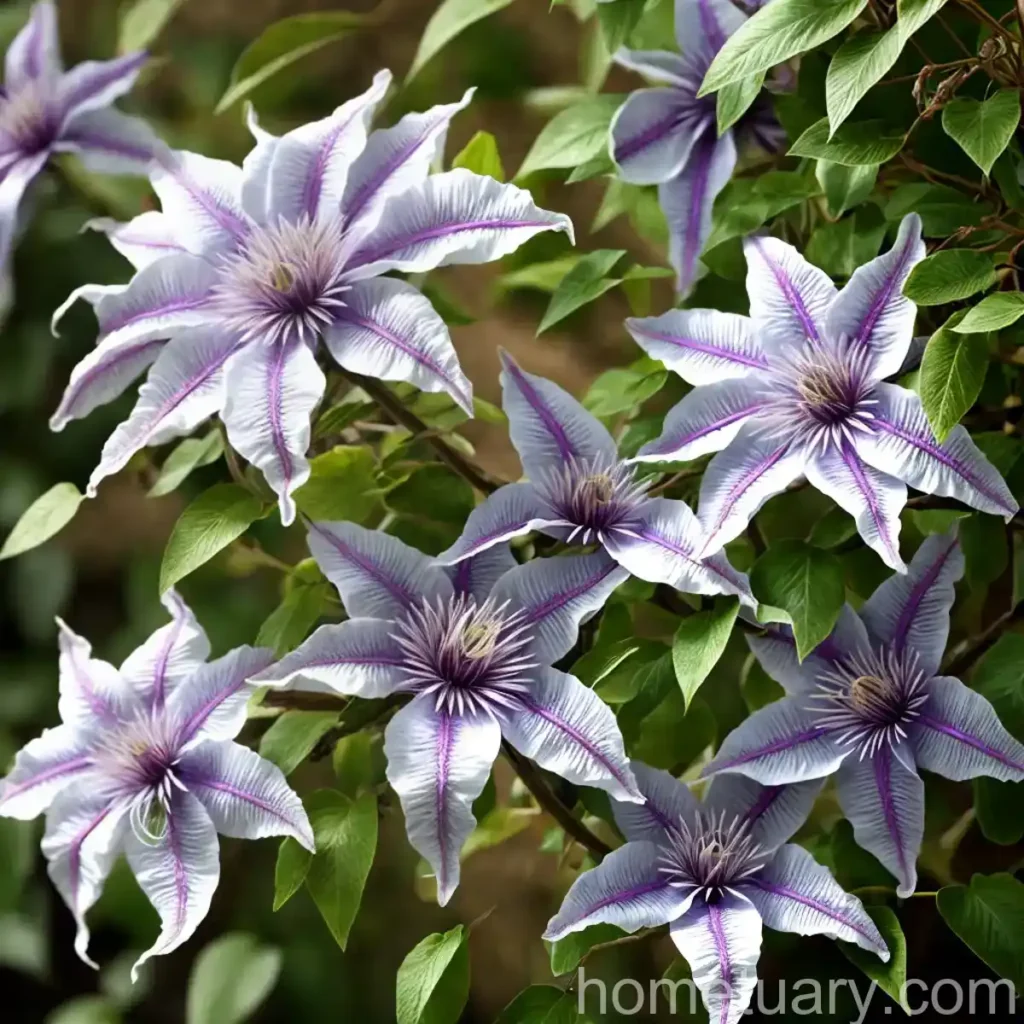Solitary Clematis (Clematis integrifolia): A Comprehensive Guide
Plants have always been a source of fascination for mankind. Their sheer diversity and the myriad ways they have adapted to their environments is nothing short of miraculous. One such captivating plant is the solitary clematis, scientifically known as Clematis integrifolia. In this comprehensive guide, we will explore every aspect of this intriguing plant, from its cultural significance to its habitat, growth requirements, and maintenance.
What is Solitary Clematis (Clematis integrifolia)?
The solitary clematis, or Clematis integrifolia, is a perennial herbaceous plant belonging to the genus Clematis in the family Ranunculaceae. This species is native to the meadows and rocky slopes of Europe and Western Asia. The plant is characterized by its bell-shaped, nodding flowers and attractive seed heads that follow the blooms.
Key Takeaways – Solitary Clematis (Clematis integrifolia)
Before delving into the specifics of solitary clematis, let’s take a quick look at the key takeaways:
- Latin Name: Clematis integrifolia
- Common Name: Solitary Clematis
- Family: Ranunculaceae
- Plant Type: Herbaceous Perennial
- Native Habitat: Europe and Western Asia
- Growth Habit: Climbing, Herbaceous
Now, let’s explore the various facets of this fascinating plant.
Culture
Understanding the cultural requirements of the solitary clematis is crucial for successfully growing and maintaining this beautiful plant. Here are the primary cultural aspects to consider:
Uses
The solitary clematis, with its striking blooms and ornamental seed heads, holds both aesthetic and ecological significance. In gardens and landscapes, it adds a touch of elegance with its climbing habit and colorful flowers. Additionally, the plant provides a valuable food source for pollinators and wildlife due to its nectar-rich blooms and seed heads.
Water
Proper watering is essential for the health and vigor of solitary clematis. As with most plants, it is important to ensure adequate moisture, especially during the growing season and dry spells. However, it is equally crucial to avoid waterlogging, as this can lead to root rot and other issues.
Sunlight
Solitary clematis thrives in locations with full sun to partial shade. While it appreciates ample sunlight for robust growth and flowering, it generally benefits from some protection from the intense afternoon sun.
Fertilizer
Appropriate fertilization can significantly impact the growth and blooming of solitary clematis. A balanced, slow-release fertilizer applied in spring can provide the necessary nutrients for healthy growth and vibrant blooms.
Soil
The ideal soil for solitary clematis is well-draining and fertile. Adding organic matter like compost or well-rotted manure helps improve soil structure and fertility, thereby creating a conducive environment for the plant’s roots.
Pruning
Pruning is an essential aspect of solitary clematis maintenance. Proper pruning encourages blooming and prevents the plant from becoming unruly. Understanding the growth habits of solitary clematis is crucial in determining the appropriate timing and technique for pruning.
Propagation
The propagation of solitary clematis can be achieved through various methods, including seed sowing, division, and cuttings. Each method has its own advantages and challenges, and the choice of propagation technique often depends on the specific circumstances and resources available.
Container Popularity
Solitary clematis is well-suited for container gardening, adding vertical interest and color to patios, balconies, and small spaces. When grown in containers, it is essential to ensure proper support for the climbing vines and to provide adequate soil volume for healthy root development.
Common Diseases
Like all plants, solitary clematis is susceptible to certain diseases that can impact its health and vigor. Being aware of these potential ailments is crucial for effective disease management and prevention. Some common diseases of solitary clematis include:
- Clematis Wilt (Phoma clematidina)
- Powdery Mildew (Erysiphe cichoracearum)
- Slime Flux
- Leaf Spot Diseases
- Botrytis Blight (Botrytis cinerea)
Disease Diagnosis
Diagnosing diseases in solitary clematis involves careful observation of symptoms such as wilting, discoloration, fungal growth, and unusual lesions. Additionally, understanding the environmental conditions and cultural practices can provide valuable insights into the potential causes of diseases.
Common Pests
In addition to diseases, solitary clematis can also face pest pressures that affect its health and appearance. Some common pests that may afflict solitary clematis include:
- Aphids
- Spider Mites
- Scale Insects
- Caterpillars
- Snails and Slugs
Effective pest management strategies involve early detection, cultural practices, and, in certain cases, the targeted use of organic or chemical controls.
Botanist’s Tips
For those passionate about cultivating solitary clematis, here are some expert tips to ensure success:
- Select suitable cultivars based on your climate and growing conditions.
- Provide sturdy support for the climbing vines, especially when growing in containers.
- Regularly monitor for diseases and pests to address issues promptly.
- Mulch and water consistently to maintain soil moisture and prevent fluctuations.
Fun Facts
- The specific epithet “integrifolia” refers to the plant’s leaves, which are entire and not divided into smaller leaflets.
- Solitary clematis is a valuable nectar source for butterflies, bees, and other pollinators.
With its captivating blooms and cultural significance, solitary clematis (Clematis integrifolia) is truly a plant worth exploring and cultivating. Whether in gardens, landscapes, or containers, its graceful presence enriches the natural environment and brings joy to those who encounter it.
To delve deeper into the world of solitary clematis or to seek additional information and resources, consider exploring the following external links:
- Royal Horticultural Society – Clematis integrifolia
- University of Maryland Extension – Clematis wilt
- Missouri Botanical Garden – Clematis integrifolia
The beauty and cultural significance of solitary clematis open up a world of possibilities for gardeners, botanists, and plant enthusiasts. Embracing its rich history and natural charm enriches the natural landscape and inspires a deeper appreciation for the wonders of the botanical world.















